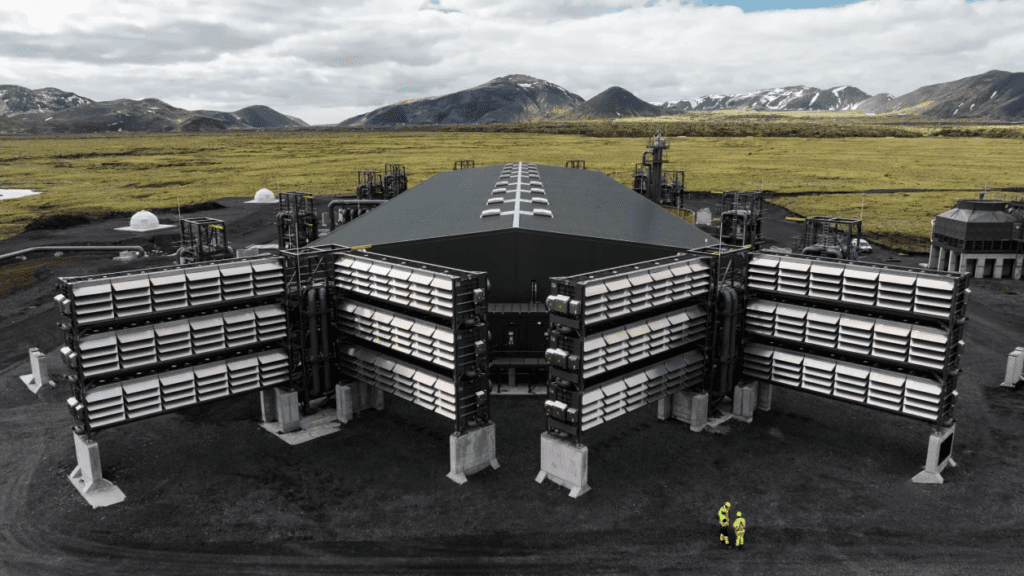Climeworks (Zurich, Switzerland) has announced that the world’s largest direct air capture and storage plant, named Mammoth, started operations in Iceland. It is the second commercial facility of Climeworks in Iceland and is about ten times bigger than its predecessor, Orca. Mammoth will bring new high-quality carbon removal capacity to the market for Climeworks to provide to its customers.
Climeworks broke ground on Mammoth in June 2022. The plant is built in a modular design, with twelve of its total 72 collector containers currently installed onsite. The plant will be completed throughout 2024. It is designed for a nameplate capture capacity of up to 36,000 tons of CO₂ per year.

This is the second commercial DAC+S facility operated by Climeworks, and is about ten times bigger than its predecessor plant, Orca. (Source: Climeworks)
Mammoth has successfully started to capture its first CO₂ product. Climeworks uses renewable energy to power its direct air capture process, which requires low-temperature heat like boiling water. The geothermal energy partner ON Power in Iceland provides the energy necessary for this process. Once the CO₂ is released from the filters, storage partner Carbfix transports the CO₂ underground, where it reacts with basaltic rock through a natural process, which transforms into stone, and remains permanently stored. Climeworks verifies and certifies the whole process by independent third parties.
The operational and testing learnings form this project will be deployed in the next direct air capture projects. Until 2030, Climeworks’ roadmap focuses on megaton hub roll-out. Climeworks is part of three megaton direct air capture hub proposals in the U.S., all of which were selected by the US Department of Energy for public funding for a total of more than 600 million USD. The largest one, Project Cypress in Louisiana, was granted an initial 50 million US dollars in March to kickstart the project. Climeworks will replicate its megaton hubs worldwide to reach a global scale. The company actively develops projects in Norway, Kenya, and Canada and explores further potential direct air capture and storage sites.